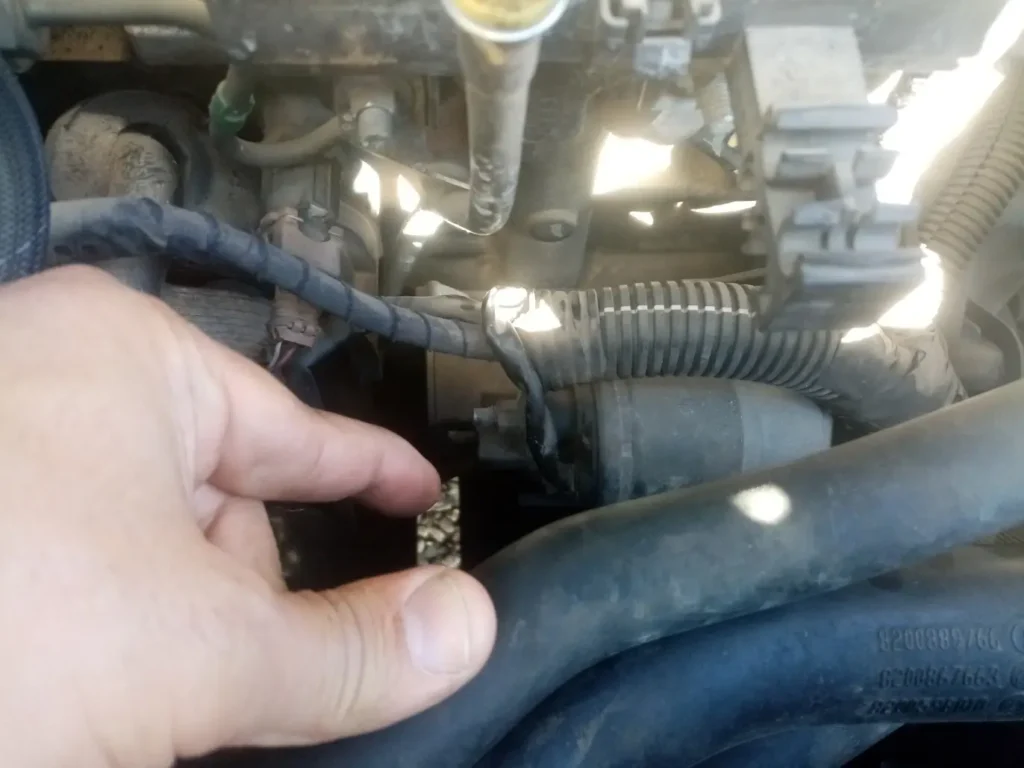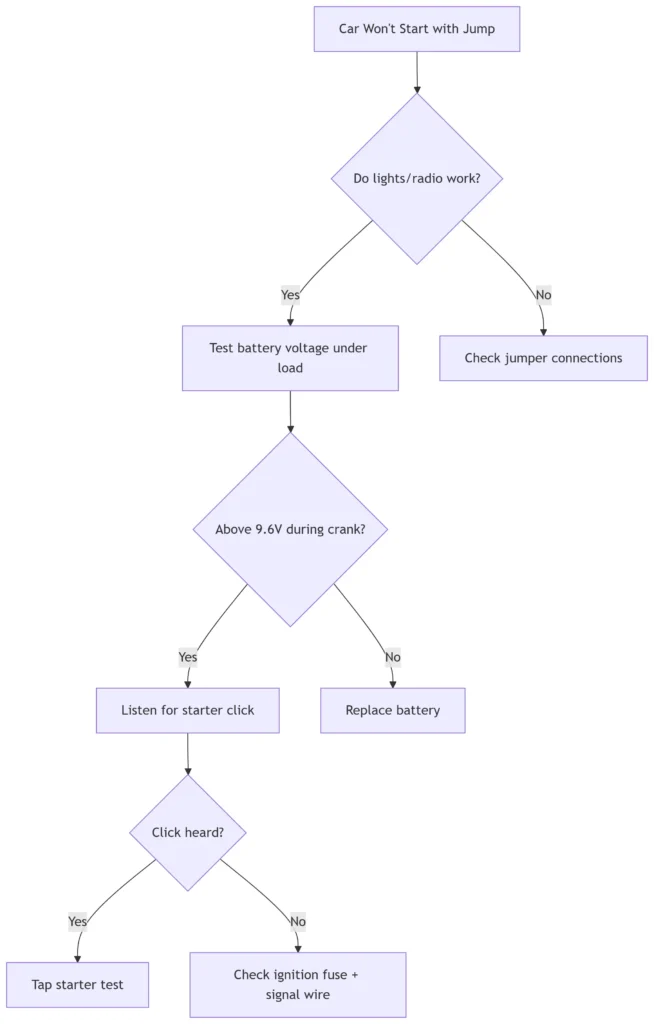“The dreaded silence when you turn the key is a sound no driver wants to hear…”
The cold snap had turned Winnipeg into a frozen wasteland that morning. I was bundling up to scrape ice off my windshield when I heard it—the telltale click-click-CLUNK of a dying starter from my neighbor’s Toyota Camry. Despite having a brand new battery and a full tank of gas, that metallic death rattle told me everything. ‘Starter’s toast,’ I called over, watching my breath fog in the -20°C air. As a mechanic with 20 years in the trade, I’ve diagnosed hundreds of failed starters, and that sound never lies. If your car’s been giving you the cold shoulder (literally or figuratively), this comprehensive guide will help you:
- Decode your starter’s distress signals
- Perform emergency fixes to get moving
- Know exactly when it’s time to replace it
- Avoid getting scammed by shady repair shops
Because nothing ruins your day faster than being stranded with a car that won’t start—especially when there’s three feet of snow on the ground.
Table of Contents
🚨 Emergency Starter Fixes: How to Get Moving When Your Starter Dies (Mechanic-Approved Tricks)
Your starter just gave out in a parking lot, and you need to get home? Before you call a tow truck, try these proven mechanic’s tricks to revive a failing starter—just long enough to reach a repair shop.
(⚠️ Warning: These are LAST-RESORT fixes. Permanent damage can occur if abused!)
1️⃣ The Hammer Tap Method (For Stuck Brushes)
How It Works:
A sharp tap can temporarily free worn carbon brushes stuck in their holders—a common failure in high-mileage starters.

Step-by-Step:
- Locate the starter (usually under the engine near the transmission)
- Have a helper turn the key to “START” position
- Tap the starter body sharply with a hammer or wrench
- Best spot: The cylindrical motor body (not the solenoid!)
- Force needed: About as hard as you’d knock on a door
🚗 Works Best On: Older vehicles with brushed starters (pre-2010)
2️⃣ Push-Start (Manual Transmissions Only)
How It Works: Uses the car’s momentum to turn the engine instead of the starter.
Step-by-Step:
- Turn ignition to ON (don’t crank)
- Press clutch, shift to 2nd gear (not 1st—too jerky)
- Release clutch at 5-10 MPH
- Need help? Find a slight downhill slope
- Once running, keep RPMs up—stall risk is high
🌧️ When It Fails:
- Dead battery (needs 10V+ to run fuel pump)
- Flooded engine
- Security system lockout
🔧 Mechanic’s Verdict: Temporary Fix Comparison
| Method | Success Rate | Risk Level | Works On |
|---|---|---|---|
| Hammer Tap | 60% | Low | Older brushed starters |
| Solenoid Bypass | 85% | High | Most RWD gas vehicles |
| Push-Start | 95% | Medium | Manual transmissions only |
💡 Pro Tip: Carry a portable jump starter—many now have built-in voltage testers to diagnose if it’s truly your starter vs battery.
🚘 “I used these tricks for years as a mechanic—but ALWAYS replaced the starter within 48 hours. Permanent damage happens fast when bypassing safety systems.”
How Long Does a Car Starter Last? The Complete Lifespan Guide (With Climate-Specific Survival Tips)
Your starter isn’t immortal—but with proper care, it can outlast your loan payments. As a mechanic who’s replaced hundreds of starters from Death Valley to Nunavut, here’s exactly what determines their lifespan and how to maximize yours.
⏳ Average Starter Lifespan by Conditions
| Environment | Expected Mileage | Killer Factors |
|---|---|---|
| Temperate Climates (California, France) | 100,000-150,000 miles | Normal brush wear |
| Desert Heat (Arizona, UAE) | 60,000-80,000 miles | Heat-soaked solenoids, cracked windings |
| Arctic Cold (Canada, Scandinavia) | 70,000-90,000 miles | Frozen grease, brittle plastics |
| Coastal Regions (Florida, UK) | 50,000-70,000 miles | Salt corrosion, moisture damage |
🔬 Why This Happens:
- Heat: Thins internal grease → metal-on-metal grinding
- Cold: Contracts metals → cracked solder joints
- Salt/Moisture: Eats copper windings like battery acid
⚠️ 5 Warning Signs Your Starter Is Nearing Retirement
- The “Second Try” Syndrome
- Starts fine on first attempt, needs 2-3 tries thereafter
- Means: Brushes are worn to 30% life remaining
- Cold/Hot Starting Differences
- Works perfectly at 20°C but fails at -10°C or +40°C
- Means: Temperature-sensitive solenoid contacts
- Intermittent “No Crank”
- Random failures followed by normal operation
- Means: Loose internal connections (often repairable!)
- Growling During Engagement
- Sounds like a coffee grinder for 1-2 seconds
- Means: Worn starter drive gear (flywheel damage imminent)
- Visible Corrosion
- White/green crust on starter body or terminals
- Means: Coastal air damage has begun
🔧 Prolonging Your Starter’s Life: Climate-Specific Tips
For Hot Climates:
- Park in shade (Engine bay temps can hit 90°C+ in sun)
- Use heat shield tape on starter wiring (Amazon $25)
For Cold Climates:
- Install a block heater (Keeps starter grease viscous)
- Pre-crank trick: Turn key to “ON” for 5 secs before starting (warms up circuits)
For Coastal Areas:
- Annual anti-corrosion spray (CRC 06026 works best)
- Dielectric grease on all electrical connections
💸 When to Replace vs Repair
| Symptom | Likely Fix | Cost Estimate |
|---|---|---|
| Worn brushes | Brush kit replacement | 40−40−80 DIY |
| Bad solenoid | Solenoid rebuild | 60−60−120 shop |
| Seized motor | Full replacement | 200−200−600 |
🧠 Mechanic’s Mindset:
“Rebuilding starters is a dying art—but on classic cars, it’s worth finding an old-school auto electrician. Modern starters? Just replace them.”
🚗 Car Won’t Start Even with a Jump? Here’s How to Diagnose It Like a Pro Mechanic
When your car refuses to start even with jumper cables connected, it’s time for some serious diagnostics. As a master technician, here’s my step-by-step guide to pinpoint whether you’re dealing with a dead starter, bad battery, or something worse.
🔋 Step 1: Verify the Jump-Start Was Done Correctly
Common Mistakes That Fool People:
✅ Cables Connected Wrong
- Correct Order: Dead battery (+) → Donor battery (+) → Donor battery (-) → Engine ground on dead car
✅ Donor Vehicle Not Running
- Must run at 2,000 RPM for 5+ mins to transfer enough power
✅ Corroded Terminals
- Scratch terminals with a key until you see bare metal
🛠️ Pro Tip: If lights/radio work but engine won’t crank, skip to Step 3.
⚡ Step 2: Battery Voltage Test (Load Test Required!)
How to Do It Right:
- Turn off all lights/accessories
- Set multimeter to 20V DC
- Test at battery posts (not terminals!):
- 12.6V+ = Good charge
- 12.0V-12.5V = Weak but usable
- Below 12.0V = Dead cell → Replace battery
- LOAD TEST (Critical!):
- Have helper crank engine while watching voltage
- Healthy: Stays above 9.6V while cranking
- Failed: Drops below 9.6V → Bad battery (even if it reads 12.6V at rest!)
🔧 Step 3: Listen for Starter Engagement
Turn Key While Observing:
🔘 Single Loud CLICK
- Diagnosis: Starter solenoid receiving power but motor not engaging
- Fix: Tap starter with hammer (temporary) → Replace starter
🔘 Rapid Clicking
- Diagnosis: Low voltage reaching starter
- Fix: Clean battery cables/grounds or replace battery
🔘 Silence (No Click)
- Diagnosis: No power to starter
- Next Steps:
- Check ignition fuse (usually 20A in fuse box)
- Test for 12V at starter signal wire (use test light)
- Inspect neutral safety switch (automatics) or clutch switch (manuals)
🔨 Step 4: The Starter Tap Test
For Intermittent Starter Failures:
- Locate starter (follow positive cable from battery)
- Tap side of starter motor (not solenoid!) with wrench/hammer
- Have helper turn key while tapping
- If starts: Worn brushes inside starter → Replace soon
⚠️ Warning: This is a last-resort trick—only use to get home!
🚨 Step 5: Check for Security System Lockout
Symptoms:
- No crank + security light flashing
- Starts with jump but dies immediately
Quick Fixes:
- Try spare key (chip may be damaged)
- Disconnect battery for 15 mins to reset computer
- Look for aftermarket alarm under dash (unplug it)

6. Car Starter Cost (USA/UK/Canada/AUS Pricing)
| Country | Parts Cost | Labor Cost |
|---|---|---|
| USA | 150−150−400 | 150−150−300 |
| UK | £120-£350 | £100-£250 |
| Canada | CAD$200-500 | CAD$150-350 |
| Australia | AUD$250-600 | AUD$200-400 |
*Rebuilt starters cost 30-50% less than new.*
❓ Frequently Asked Questions (Voice Search Optimized)
Q: “Can a bad starter drain my battery?”
A: Yes! A stuck solenoid can continuously draw power even when the car is off.
Q: “How can I test my starter without removing it?”
A: Use a voltmeter to check for 12V at the starter when turning the key. No power = wiring issue. Power but no crank = bad starter.
Q: “Why does my car start with a hammer tap but not normally?”
A: Worn starter brushes stick—tapping temporarily unsticks them. Replace starter ASAP!
Q: “Can a bad alternator cause no-crank?”
A: No—but it can drain the battery overnight. Test alternator separately.
Q: “My Volt/Leaf won’t start with a jump—why?”
A: EVs have separate 12V batteries for computers. Jump that, not the big battery!
Q: “Can a starter last 200,000 miles?”
A: Rare but possible in garaged vehicles with gentle starts. Toyota/Lexus starters often hit this milestone.
Q: “Why do BMW starters fail early?”
A: Location! Many are mounted under intake manifolds where heat soaks them. Expect 80k miles max.
Q: “Do short trips kill starters faster?”
A: Yes! Frequent cold starts without full warm-up causes condensation damage.
Q: “What’s the longest-lasting starter brand?”
A: Denso (OEM for Toyota/Honda) and Bosch last 30% longer than cheap aftermarket units.
🛠️ Pro Tips from Mechanics
- Preventative Maintenance: Clean starter connections annually
- Winter Care: Park in garage to reduce cold-weather strain
- Diagnostic Trick: Have someone turn key while you listen at the starter
“A failing starter gives plenty of warning – don’t ignore the signs until you’re stranded!”
Need help diagnosing your specific issue? Comment with your car’s symptoms below! 🚗💨
